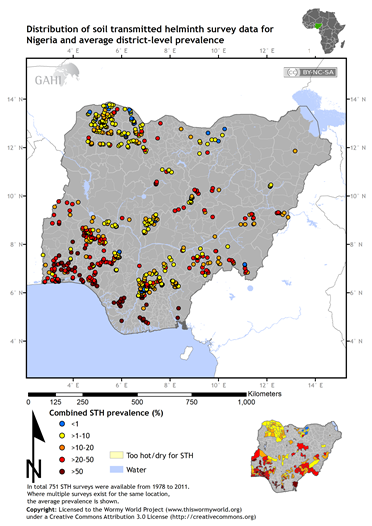The presence of intestinal parasites interacts with poor nutrition though a number of mechanisms, including blood loss that triggers anaemia, and under nourished children have a greatly increased likelihood of developing parasite induced diarrhoea, which can become a chronic disorder. Dietary deficiencies can affect the immune system. The parasitic load also requires energy to survive.
Figure 8: Distribution of soil transmitted helminth survey data for Nigeria and the average district level prevalence

The data on intestinal parasites for the NW states are rather patchy. The diagram above from Wormy world indicates that the cumulative STH prevalence is mostly high at >20-50, although lower in some locations of the NE states. One study has determined the prevalence of intestinal parasitism among 257 pupils in rural schools in the Konduga LGA of Borno state (rural NE Nigeria) (Damen et al, 2011). This found that the prevalence was high being 80.9%, with the 6-8 year old age group having the highest prevalence at 85.7% and the 13-16 years old group the lowest at 77.7%. The highest prevalence was Ascaris lumbricoides (19.1%).